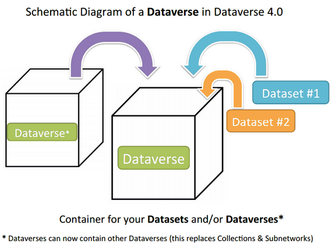...
The Texas Data Repository is a platform for publishing and archiving datasets (and other data products) created by faculty, staff, and students at Texas higher education institutions. The repository is built in an open-source application called the Dataverse software, developed developed and used by Harvard University.
...
- Researchers can deposit a wide variety of data and related electronic materials to the Texas Data Repository, including spreadsheets, sensor and instrument data, surveys, GIS data, and imagery, along with associated material such as codebooks or data dictionaries. Any individual file uploaded to the repository must be under 4GB, though any uploads over 2GB, and some below that threshold, may be slow or stall due to variables outside of TDL's control. Please email support@tdl.org if you having trouble uploading files. If you have files over 4GB, we will consider support options on a case by case basis and in consultation with your Institutional TDR liaison.
- The Texas Data Repository encourages data deposit from all disciplines and can accept any type of data file, though it is advisable to provide data in non-proprietary formats in order to ensure broader use for researchers with access to different analytic software.
- By default, published data is assigned a CC0 license, so that others may freely access and build upon the work. Researchers can alter this license and create custom terms of use for their data if appropriate.
- The Texas Data Repository does NOT accept content that contains confidential or sensitive information, and requires that contributors remove, replace, or redact such information from datasets prior to upload. Confidential or sensitive information refers to all identifiable information, such that re-identification of any subjects from the amalgamation of the information available from all of the materials is possible and can include: social security numbers; credit card numbers; medical record numbers; health plan numbers; other account numbers of individuals; or biometric identifiers (fingerprints, retina, voice print, DNA, etc.).
How the Dataverse Software Works
A Dataverse collection is a container for datasets (research data, code, documentation, and metadata) and other DataversesDataverse collections, which can be setup for individual researchers, departments, journals, and organizations.
Each Dataverse collection contains datasets. Each dataset includes:
...
